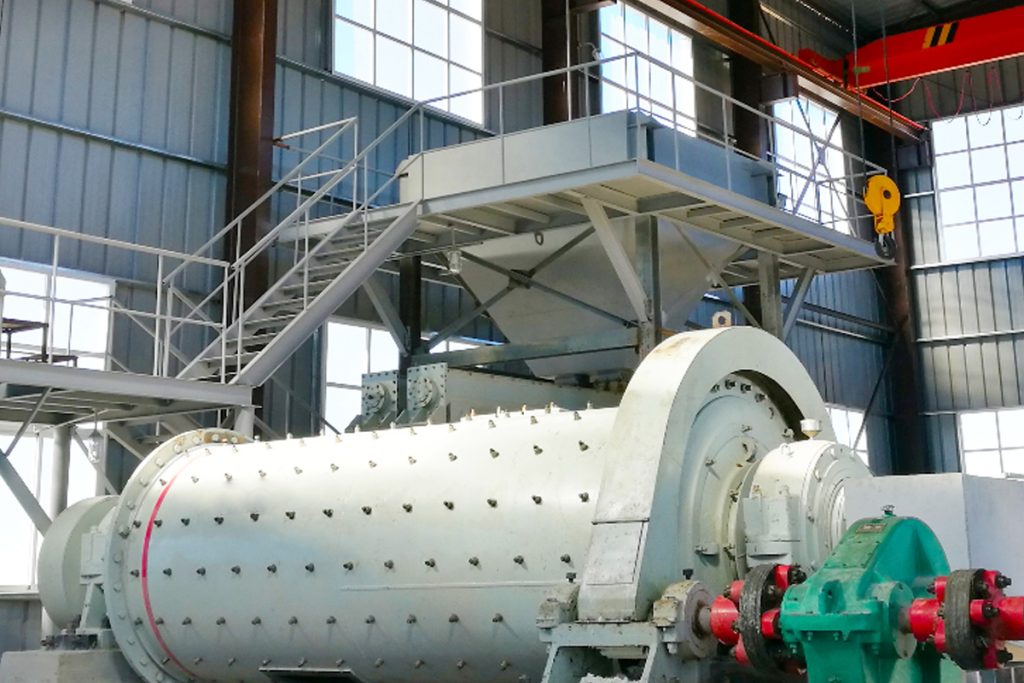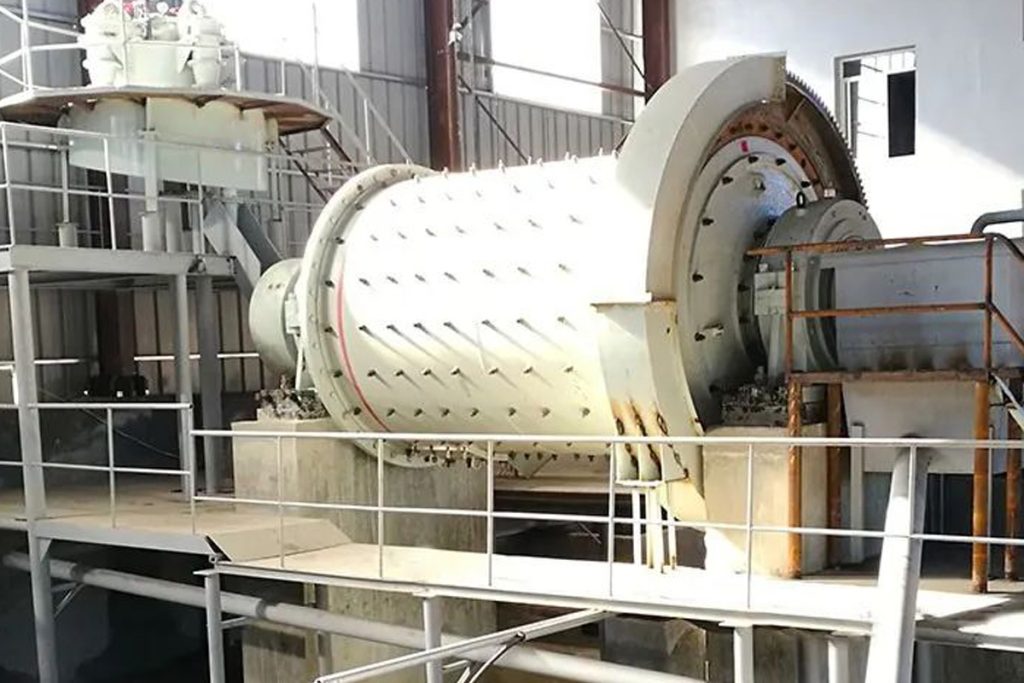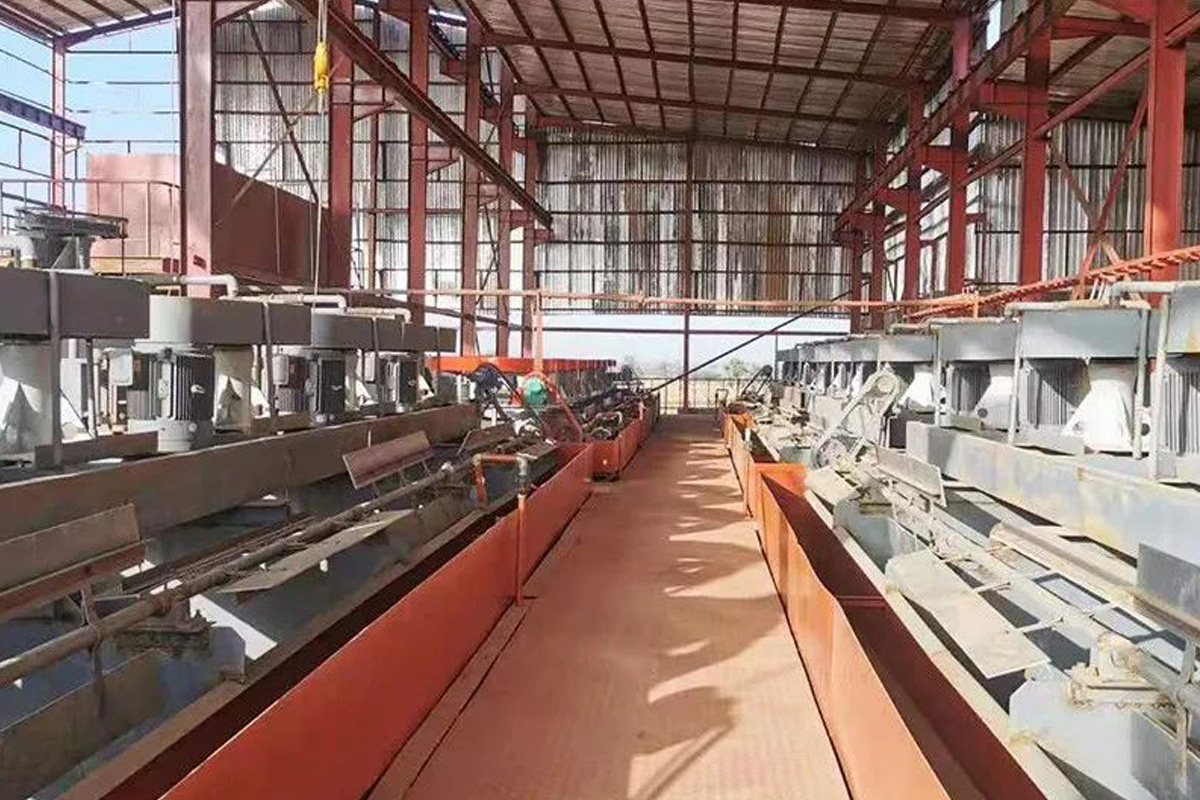In the grinding stage, it is often necessary to achieve the separation of different minerals through selective grinding, prevent over-grinding of valuable minerals to be recovered, and reduce over-grinding of gangue minerals. In the grinding process, there are many factors that affect the selective grinding effect, such as ore properties, mill type, operating conditions, etc.
Influence of Ore Properties on Selective Grinding
Different substances have different cohesive forces on the binding surfaces, and the cohesive forces on the cohesive surfaces between different minerals are weak, and the cohesive forces on the cohesive surfaces are weaker than those between internal particles. The mechanical properties of different minerals are different, so any ore composed of two or more minerals will preferentially break at the place where the cohesion force is weaker during the grinding process.
The grinding behavior between different minerals is mainly reflected in the fact that hard minerals have a shielding and protective effect on soft minerals, and soft minerals have a catalytic and promoting effect on hard minerals. The greater the hardness difference, the stronger the catalytic and shielding effect.
At the same time, the selective grinding effect increases with the coarsening of the ore particle size and the increase of the inhomogeneity of the ore particle strength, and becomes weaker with the decrease of the ore particle size and the decrease of the inhomogeneity of the ore particle strength.

Influence of Mills Types on Selective Grinding
Common grinding equipment includes ball mill, rod mill, autogenous mill, semi-autogenous mill, vibrating mill, stirring mill, etc. Due to different working principles, the selective grinding effect on ore is also different.
Grid type ball mill
The grid type ball mill is a low-level compulsory ore discharge. The materials with high density are deposited at the bottom of the mill first, and can be discharged when the particle size is relatively coarse. At the same time, it can effectively protect the integrity of coarser grain minerals.
Overflow type ball mill
The overflow type ball mill is one of the Mineral processing equipment, which is mainly used for automatic overflow discharge of ore pulp. During the grinding process, the dense ore particles settle quickly, easily fall into the bottom of the mill, and are not easy to overflow from the mill. They need to be ground finer. Therefore, the selective grinding characteristics of this equipment can be fully utilized to separate coarser light minerals and finer heavy minerals, such as Carlin-type gold ore and extremely fine-grained gangue minerals. Grinding free between.
Vibrating mill
The vibrating mill mainly relies on the unbalanced periodic force generated by the excitation source to drive the movement of the mill, so that the materials and media in the mill are ground and peeled off each other. Cracks and dissociation, due to this grinding characteristic, the vibration mill has a good selective grinding effect.
Stirring Mill
Stirring mill is one of the mineral processing equipment. It uses grinding as the main grinding method. The agitator and the medium are placed in the cylinder, and the friction between the particles generated by the relative motion between the rotor and the stator achieves fine grinding of the material. the goal of. Due to its grinding properties, it is more suitable for fine grinding.
Influence of Five Operating Conditions on Selective Grinding
In addition to the above factors, the operating conditions of the mill will also affect the selective grinding, including factors such as grinding concentration, grinding medium, medium filling rate, and mill time.
Condition 1:Grinding concentration
The concentration of the grinding slurry is mainly reflected in the viscosity and fluidity of the slurry, which affects the crushing force of the material and the grinding time. The cover layer attached to the surface of the medium affects the interaction between the material, the medium and the liner. , thus affecting the grinding effect.
Condition 2:Grinding media
Different media have different movement forms and ore particle contact forms during the grinding process, and different media sizes and media materials obtain different energy during the movement process in the mill, resulting in different striking forces and striking probabilities for ore particles. That is to say, the form, size and material of different grinding media have different effects in the grinding process.
Condition 3 :Mill filling rate
The filling rate has a great influence on the ore grinding effect. As the medium filling rate gradually increases, the accumulation of the medium increases accordingly, and the relative distance of the medium rising and the throwing distance become shorter. Therefore, the energy obtained at the moment of throwing Smaller, resulting in the weakening of the medium’s impact on the material and the grinding and peeling effect. On this basis, a higher filling rate can effectively protect the softer and brittle minerals from being over-crushed. When selectively grinding coarser particles, the media filling rate should be less than 40%, sometimes as low as 20%.
Condition 4:Grinding time
The grinding time has a certain influence on the product particle size. With the prolongation of the grinding time, the mineral particle size decreases and the mechanical strength increases, making the strength of various minerals closer and closer, reducing the selective grinding effect. Therefore, in order to To enhance selective grinding and reduce over-grinding, the grinding time should not be too long.
Condition 5:Mill speed
With the increase of the mill rotation rate, the movement state of the medium in the mill changes from the cascading type to the throwing type, the impact force on the ore particles increases, and the crushing efficiency increases, but the selective grinding effect decreases. The media movement state has different selective grinding effects, among which the media in the cascading state mainly has the grinding effect, and the falling state has the impact effect as the main effect and the grinding effect as the supplementary action.

In conclusion
The above are the factors that affect the selective grinding. In actual production, it is necessary to combine the synergy of various factors and the on-site production situation to carry out overall comprehensive analysis and control, and optimize the particle size composition of the grinding product through reasonable adjustment, so as to improve the grinding efficiency and reduce the grinding energy consumption.
